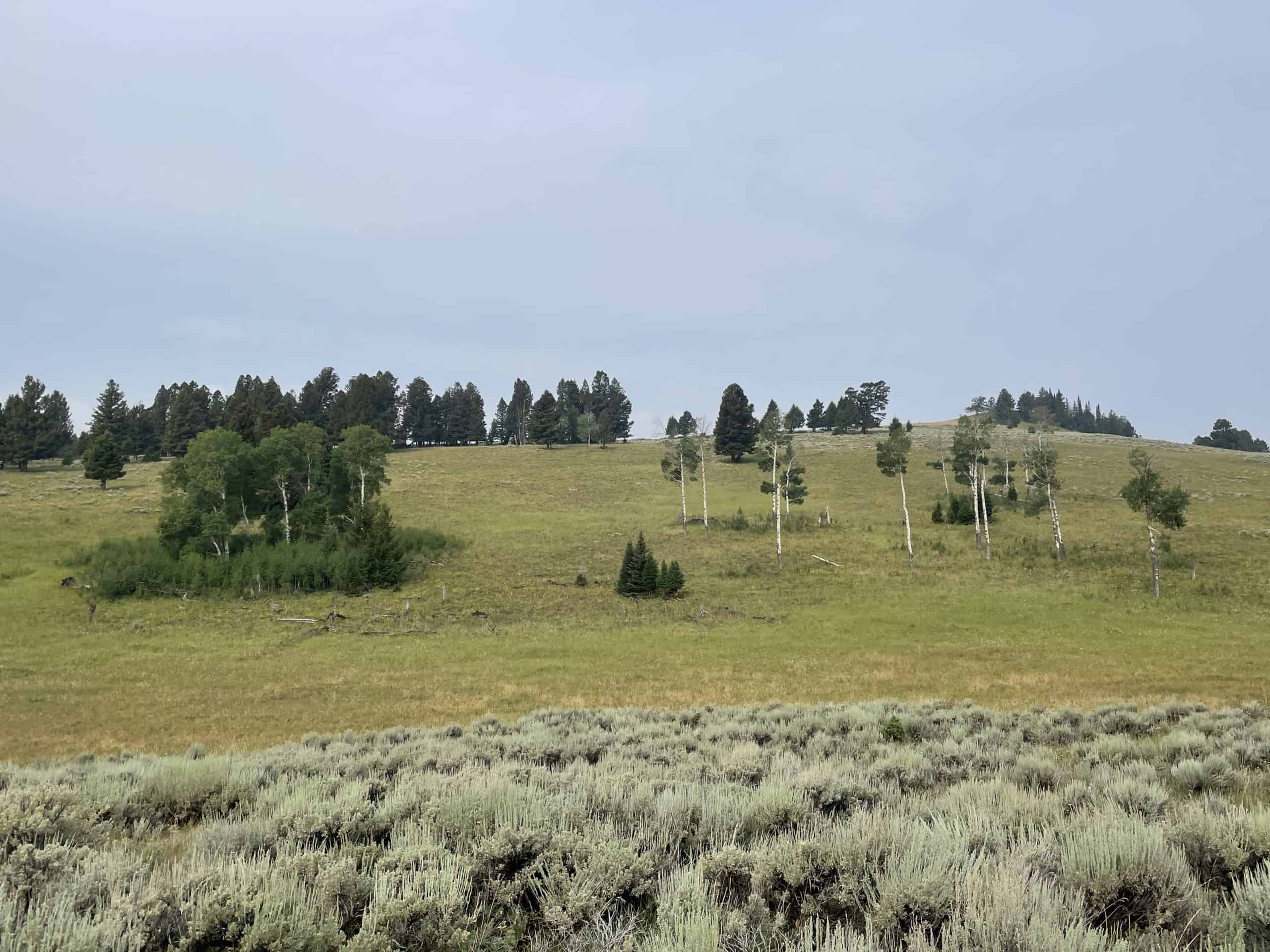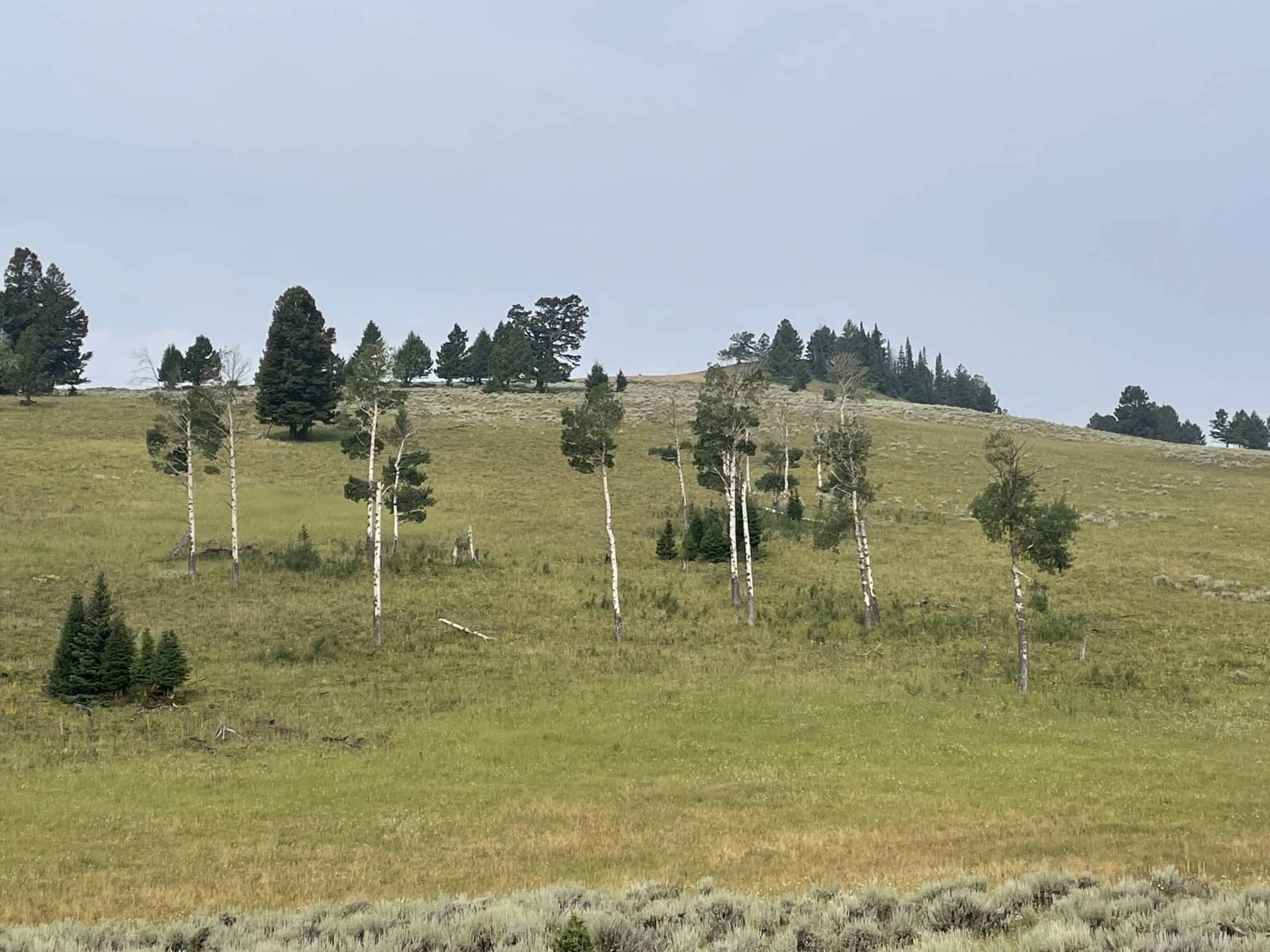Share this article
Research casts doubt on strength of Yellowstone aspen recovery after wolves returned
The wolf reintroduction success story in Yellowstone is a familiar one. After wolves were reintroduced to the national park in the 1990s, they began preying on elk, which had overbrowsed aspen trees and other woody vegetation. Over time, researchers found woody plants began to recover and transform the landscape into a healthier ecosystem.
But a recent study suggests the effects on aspen recovery weren’t so dramatic. In the study published in Ecology Letters, a team of elk, wolf and vegetation biologists concluded that gray wolves (Canis lupus) did not cause as much aspen regeneration as once thought. After scrutinizing the methods used to draw this conclusion, they found that because the earlier researchers did not use random sampling, their results were skewed.
“In Yellowstone, the hypothesis of the trophic cascade, where wolves are affecting elk and in turn affecting aspen, is one of the most well-known and talked about ecological effects of large carnivore restoration and reintroduction,” said Dan MacNulty, an associate professor of wildlife ecology at Utah State University. He was a co-author of the study led by his Utah State PhD student, Elaine Brice. “It’s often used as a motivation and inspiration for carnivore reintroductions elsewhere in the U.S. and across the world.”

An aspen stand (left) in Yellowstone National Park shows robust regeneration of young trees. Scientists have attributed this kind of growth to the reintroduction of wolves, but recent research raises new questions.
Image Credit: Dan MacNulty
To find out if aspens in Yellowstone National Park were really doing as well as researchers thought, Brice and MacNulty partnered with Eric Larsen, an aspen specialist, to conduct their own tree measures in elk (Cervus canadensis) winter range using random sampling to account for the height of all young aspen trees in a given stand. They compared those findings to the previous research. In that work, biologists sampled only the five tallest young aspens within a stand in hopes they would serve as an indicator of future recovery of the entire aspen population.
“You essentially walk into an aspen stand and simply look around at what the tallest young aspens are doing,” said Robert Beschta, an emeritus professor in the Department of Forest, Ecosystems and Society at Oregon State University, who conducted some of the earlier research on aspen regeneration in Yellowstone. The team began measuring tree height in 2006 and inferred past height of the tallest plants for previous years. “You have to realize in the 1990s, even the five tallest young aspen in the northern range were less than one-meter tall, and most averaged only 50 centimeters in height. Everything was being heavily browsed.”
Findings from that research showed dramatic growth after wolf reintroduction. “These plants were beginning to tell us something about aspen and that something was beginning to happen,” he said.
The findings of the new research however, showed less aspen recovery than the previous studies showed. Yes, there was a trophic cascade, MacNulty’s team found, but it was much weaker than the one that non-random sampling showed.

This stand shows little to no regeneration. Biologists say past research on the impact of wolves in Yellowstone ignored stands like these. Credit: Dan MacNulty
“It’s easy to drive through northern Yellowstone and identify aspen stands that are regenerating spectacularly,” MacNulty said. “The naïve observers aren’t observing all of the other stands that are not regenerating and are not as visually spectacular.” Measuring only the tallest trees fails to take into account the trees that didn’t regenerate, he said, and it overplays larger trees that become outliers because they’re taller than the height that elk prefer to browse at.
Beschta said there weren’t any trees that were past elks’ knee height when he and his colleagues began studying them, suggesting that by predating on elk, wolves were helping to restore the trees. He said he and his colleagues focused on the tallest young trees to see if any could again grow above the upper browse level of elk, a height of about 200 centimeters.
MacNulty also argues that past research doesn’t account for what else is happening in the ecosystem, like sunlight, moisture and soil quality that could contribute to tree size.
“Yes, there’s some regeneration going on in some places, but in a lot of places regeneration is not happening,” he said. “The question is ‘why?’”
The team is still exploring that question. MacNulty said it likely has something to do with climate warming causing increased drying and less snowpack in some areas, whereas other areas at higher elevation are more suitable for aspen. “I think that should temper our expectations of what ecological effects large carnivores might have,” he said.
Beschta doesn’t think climate change played a major role in the ecosystem changes at the time of his study. “I think over the span of time we worked on it, climate change has been a non-player,” he said. “Over the time period of concern, the biggest thing affecting plants has been the level of browsing.”
Beschta stresses that when an ecosystem changes, there are multiple measures researchers can employ, and he and his colleagues looked at the five tallest trees, while MacNulty and his colleagues looked at average aspen height. “I’m totally comfortable in what we’ve done,” he said. “I never argued it is the perfect measure or represented average aspen height, but it does indicate a change in aspen dynamics.”
For MacNulty, the recent study shows the importance of random sampling and of considering trophic cascades from a multi-disciplinary perspective. “The devil is in the details,” he said. “Don’t be bamboozled by spectacular visuals.”
Header Image:
The trophic cascade in Yellowstone National Park may be weaker than previously thought.
Credit: Yellowstone National Park








